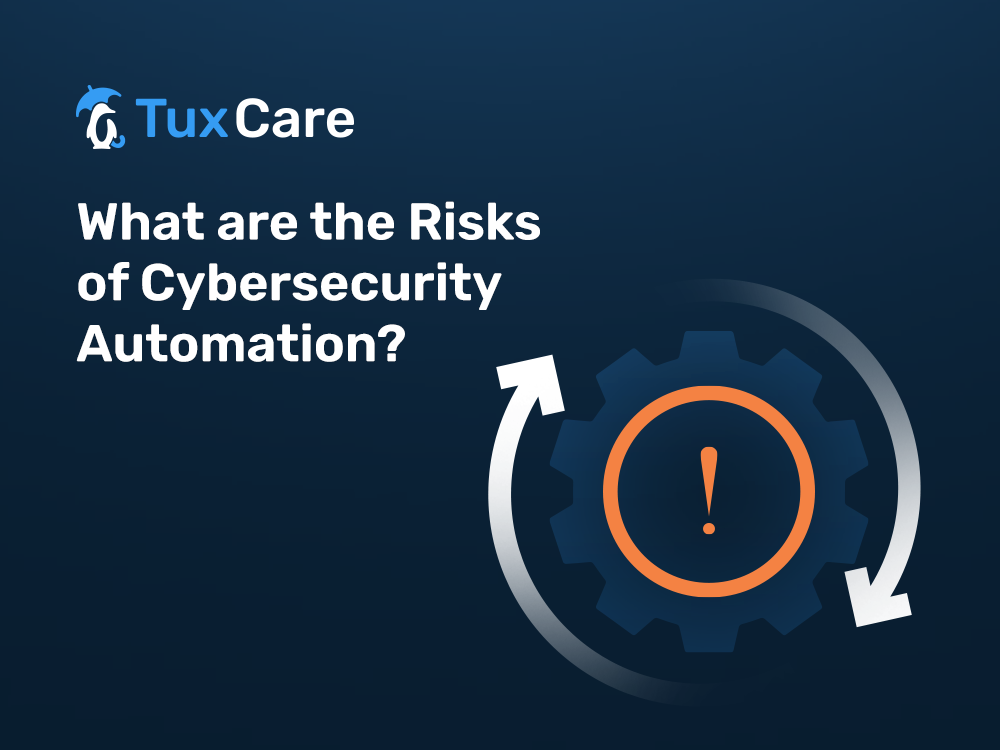What are the Risks of Cybersecurity Automation?
Cybersecurity professionals need to be aware of new threats and take action immediately so that we can minimize the risk of future incidents occurring. Much of this can be achieved with the right automation tools, and forward-thinking organizations have already put many of their cybersecurity workflows on autopilot. However, relying too much on cybersecurity automation or following a poorly-designed automation strategy can be a far greater risk to an organization.
Why is Cybersecurity Automation Critical?
Many cybersecurity vendors aggregate threats by first gathering as many as they can from all attack vectors and their internal systems and external sources. However, they often gather large amounts of raw, unstructured, and often inaccurate threats, then provide little benefit by neglecting to organize these threats into actionable next steps. The onus then falls on client organizations to decide how to respond to the threats presented to them, which is oftentimes a manual undertaking. Security experts must spend their valuable working hours manually performing repetitive, low-value, and often tedious tasks. These duties include threat hunting, incident response, and forensic analysis. With cybersecurity automation solutions, they can automate these repetitive tasks so they can spend more of their valuable human resource hours doing higher-value work.
Moreover, cybersecurity professionals agree manual defenses no longer combat modern cyber threat activity sufficiently. To stay as safe as possible, organizations must incorporate automation into their security strategies.
Automated detection and response can reduce the number of potential vulnerabilities within an organization’s network infrastructure. With cybersecurity automation, teams can quickly identify and respond to emerging cyber threat activity more efficiently than they would be able to with manual processes.
If properly implemented, automation can aid in preventing successful cyber attacks. Automation can speed up the creation of defensive actions without stressing resources, all while staying ahead of the attackers’ plans.
The Importance of Security Governance alongside Automation
Automation in non-security components of a modern organization also introduces the need for automation of cybersecurity workflows.
While the automation involved in IIoT and industrial frameworks give us a comprehensive model for better security and safer deployments, the model introduces the criticality of continuous monitoring, patching, and remediating through automation of the various systems to maintain the highest state of readiness, security, and availability.
Patching live systems in memory is essential to maintaining the continuous uptime of the components used within IIoT and industrial frameworks. While the framework promotes resilience, each element’s reliability is critical to maintaining the expected security posture.
Along with automated vulnerability patching, updating essential and critical software libraries, and having a strategy for extended software security support for applications reaching end of life, organizations need to incorporate these automation tool functions within the operations domain.
Fortunately, with solutions from TuxCare, this is all possible.
How Does Automation Introduce Additional Risk?
With increased efficiency and a “set it and forget it” implementation approach, cybersecurity automation also comes with its own set of new risks to worry about – which organizations should constantly keep their eyes on.
Patching a thousand systems automatically each morning, for example, could cause an internally created cybersecurity attack. If SecOps and DevOps did not perform a QA before releasing the automated patch, they could propagate a self-infected attack on their servers.
Automation is critical in the security orchestration, automation, and response (SOAR) framework. SOAR capabilities are often limited to the ability to connect to devices and prefer preventative or responsive security controls. However, SOAR could only cause more harm than good if not adequately tested.
Hackers will also target victims by using automation attacks. In many cases, the hackers will impersonate internal SecOps teams with phishing emails encouraging users to disregard any anti-virus update and only accept patches from their URL.
Consequences, like Possible Loss of Function
These risks can have varying impacts, ranging from mild to intense.
Isolated equipment damaged is one of them. In this case, the system could be compromised or unserviceable. Because automation is redundant, it can cause no operational impact apart from rebuilding and restoring the compromised device.
Another possibility is widespread loss of functions from a class of machines (all window machines for automated instruments, for example): If backups and skilled workers are available, these events can cause downtime of hours to days depending upon the complex nature of the site.
Automating Device Patching with TuxCare
With vulnerability patching solutions from TuxCare, leaving your systems exposed for too long is one less automation-related risk you need to worry about. TuxCare’s automated vulnerability patching solution, KernelCare Enterprise, enables you to automatically deploy the latest Linux vulnerability patches without reboots.
KernelCare protects your Linux systems by rapidly eliminating vulnerabilities without you needing to wait for maintenance windows or downtime. With TuxCare, IT teams can automate taking new patches through staging, testing, and production on all popular Linux distributions.
TuxCare features flawless interoperability with vulnerability scans, security sensors, automation, integration with vulnerability management process, reporting tools, and our ePortal patch deployment management platform. This dedicated private patch server runs inside your firewall on-premises or in the cloud.
TuxCare is also the only provider to live patch virtually all vulnerabilities in kernels, shared libraries, virtualization platforms, and open-source databases across all popular distributions.



 Documentation
Documentation Login
Login



